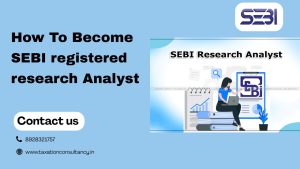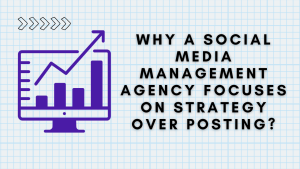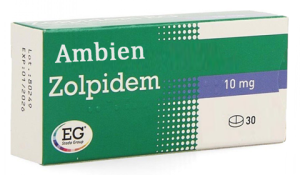Millions of people worldwide suffer from Attention Deficit Hyperactivity Disorder (ADHD), a neurodevelopmental disorder. Executive functioning, the collection of mental processes that allow us to properly plan, focus attention, remember instructions, and balance various tasks, is one of the main issues faced by people with ADHD. Determining the best ways to improve focus, organization, and general well-being for people with ADHD requires an understanding of the complexities of the disorder and how it affects executive functioning.
Comprehending Executive Functioning and ADHD
The symptoms of impulsivity, hyperactivity, and inattention are what define ADHD. Even though these symptoms are widely known, executive functioning problems are frequently the underlying cause. Higher-order cognitive processes known as executive functions allow people to:
Plan
Make plans and anticipate what is ahead.
Organize
Put things in their proper places—tasks, supplies, and ideas.
Start assignments or activities on your own.
Pay attention and stay away from outside distractions.
Regulat
Control feelings, inclinations, and actions.
Monitor Evaluate one’s own work and make necessary adjustments.
These executive processes may be compromised in people with ADHD, making it difficult for them to properly manage social interactions, everyday responsibilities, and scholastic or professional obligations.
Difficulties Related to Executive Functioning and ADHD
People with ADHD frequently find it difficult to stay focused on activities that aren’t very interesting or entertaining. They might easily become sidetracked by internal or external stimuli, which could result in unfinished undertakings or assignments.
Inadequate Time Management and Organization
Deficits in executive functioning might show up as trouble making plans in advance, predicting time effectively, and arranging things in a logical order. This may lead to forgetfulness, missed deadlines, and a feeling of being overburdened with obligations.
Impulsivity and Emotional Regulation
One of the main characteristics of ADHD is impulsivity, which can cause problems with social interactions and decision-making. Emotional dysregulation can result in angry outbursts or make it harder to handle stressful situations.
Procrastination and Task Initiation
Even for those with ADHD who are capable of finishing tasks, initiating them can be quite difficult. A predilection for tasks that yield instant satisfaction combined with executive functioning deficiencies may lead to procrastination.
Techniques to Enhance ADHD Executive Functioning
Even though executive functioning is severely impaired by ADHD, there are a number of techniques and interventions that can assist people manage their symptoms and enhance day-to-day functioning:
Adjustments to the Environment
Reduce Distractions
Establish a peaceful, orderly workstation devoid of extraneous noise. If required, use white noise generators or headphones with noise cancellation.
Visual Reminders
To help with task management and to give structure, make use of visual calendars, checklists, and schedules. Putting labels on things or color-coding them can also improve organization.
Regularity and Predictability
Create daily routines and adhere to regular timetables for meals, schoolwork, and bedtime. Time management and anxiety reduction are two benefits of predictability.
Technology and Tools
Prioritize tasks, make to-do lists, and set reminders with digital tools like task management applications (like Todoist, Trello). To assist with staying on task, these apps might offer notifications and visual signals.
Tablets and smartphones can be used as electronic organizers to store documents, notes, and other pertinent data. To cut down on paper clutter, use note-taking apps (like Evernote and OneNote) and document scanning software.
Set aside specified times for concentrated work and divide activities into digestible parts using timers and alarms. The Pomodoro Technique, which calls for scheduled work intervals and brief rest periods, has been shown to be very successful.
Strategies and Skill Development
Chunking Tasks
Divide difficult jobs into smaller, easier-to-complete steps. To lessen emotions of overload, encourage finishing one step at a time before going on to the next.
Prioritization and Planning
Provide knowledge on how to arrange tasks according to importance and due dates. Sort jobs into categories and allot time appropriately by using techniques such as Eisenhower’s Urgent/Important Principle.
Self-monitoring and Reflection
Motivate people to keep an eye on their own development and consider their advantages and disadvantages. Writing in a journal or doing reflection exercises can help with self-awareness and goal-setting.
Behavioral Interventions
Put in place a system of incentives and prizes for finishing projects or reaching objectives. People with ADHD may find it easier to stay focused and persevere in their efforts if they get positive feedback.
Behavioral Contracts
Draft written contracts that include goals, expectations, incentives, and penalties for reaching or failing to fulfill them. Involve stakeholders to offer responsibility and support, such as parents, teachers, and employers.
Use therapeutic interventions or structured training programs to offer direction on social interactions, emotional control, and problem-solving techniques. These abilities can lessen conflict and enhance interpersonal interactions.
Supportive Techniques in Learning and Work Environments
Educational Environments:
Individualized Education Plans (IEPs)
Create tailored plans that specify supports and accommodations for ADHD kids. Extended testing periods, preferred seating arrangements, and assistive technology accessibility are a few examples.
Modify instructional strategies to take into account a range of learning preferences and offer chances for active participation. To enhance focus and attention, employ multimodal strategies and provide opportunities for movement breaks.
Cooperation with Parents and Teachers
Encourage candid dialogue among parents, educators, and school officials to guarantee uniformity in support tactics and efficiently track student development.
Work Environment:
Promote workplace concessions like ergonomic modifications, quiet workspaces, and flexible scheduling. It is possible to improve performance and job satisfaction through clear communication of expectations and goals.
Workplace Coaching and Support Programs
Provide workplace coaching or programs that offer direction on interpersonal skills, time management, and organization. These programs can assist people with ADHD in handling their job responsibilities in an efficient manner.
Employee Education and Awareness
Educate coworkers and managers about executive functioning issues and ADHD. Encourage an environment where employees who are neurodiverse are understood and supported.
The Value of Comprehensive Assistance
Enhancing executive functioning in ADHD sufferers necessitates a multidimensional strategy that takes into account each person’s particular abilities, difficulties, and preferences. Through the integration of supportive interventions, technology, skill-building techniques, and environmental adaptations in educational and professional environments, we can enable people with ADHD to improve their overall quality of life and improve their attention and organization.
Final Thoughts
ADHD has a major negative influence on executive functioning, making it difficult to focus, organize, manage time, and control emotions. However, people with ADHD can learn to successfully control their symptoms and thrive in social, professional, and academic contexts with the help of focused methods and encouraging treatments. Through creating inclusive workplaces, offering tools, and cultivating understanding, we may enable individuals with ADHD to realize their full potential and make significant contributions to society. Stressing the value of executive functioning abilities helps people with ADHD in the short and long term, as well as bringing a diversity of skills and viewpoints to our communities. We can improve assistance for people with ADHD and deepen our understanding of the disorder through ongoing research, instruction, and advocacy.







